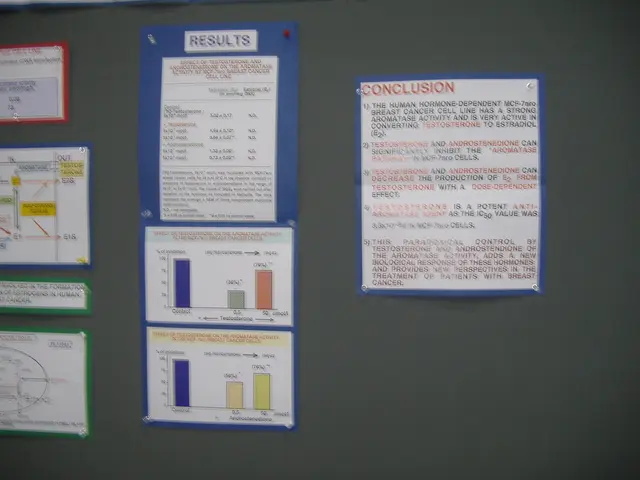Imminent threat of lethal hunger in Gaza, as per warning issued by WHO
In the Gaza Strip, a humanitarian crisis of unprecedented proportions is unfolding, with tens of thousands of people facing starvation and malnutrition. Over the past 24 hours, ten people have reportedly died as a result of hunger, bringing the total number of deaths to 111 since the start of the crisis[1].
According to the World Health Organization (WHO), the 2.1 million people living in Gaza are facing starvation, with more than 100 international aid organizations calling for immediate access to those in need[2]. The United Nations has established guidelines for declaring a famine, but assessing these criteria in the Gaza Strip, given the ongoing Israeli attacks and continuous displacement of the population, is challenging[3].
The World Food Programme (WFP) reports that a quarter of the population in Gaza is now living in conditions similar to famine, with 90,000 women and children urgently needing medical treatment[4]. Mohammed Dschudi, a resident of Gaza, has lost about 30 kilograms since the start of the Gaza War[5]. Six-year-old Adam often wakes up crying from hunger at night, according to his mother Sama Abu Dawud[6].
The situation is particularly dire for children, with at least 21 children under the age of five having died from malnutrition since the beginning of the year, according to WHO documentation[7]. Since mid-July, centers for children with acute malnutrition have been overwhelmed[8]. Between mid-May to mid-July, more than 1,600 trucks with UN aid were approved but could not be distributed, with an estimated 600 to 650 trucks per day needed to meet basic needs[9].
Residents report violence and chaos in the distribution of aid packages, with at least 900 people having been killed recently while trying to obtain food[10]. Thousands marched through Tel Aviv to protest the Gaza war, displaying photos of children from the Gaza Strip who are said to have died from hunger-related causes and carrying bags of flour to highlight the crisis[11].
The Israeli government spokesman stated that there is hunger in the Gaza Strip, but Israel is not to blame, accusing Hamas of preventing the distribution of aid and seizing aid trucks[12]. However, the UN denies the claim that they are not picking up aid trucks within the Gaza Strip[13].
In conclusion, the hunger crisis in the Gaza Strip is escalating rapidly, with daily death tolls from malnutrition and starvation reaching alarming levels. The situation is particularly dire for children, with thousands suffering and dying from acute malnutrition. The international community must act urgently to address this crisis and provide the necessary aid to those in need.
References: [1] Al Jazeera, 2021. Gaza's hunger crisis: 'Children are dying every day' [online] Available at:
- The World Health Organization (WHO) is involved in the health-and-wellness sector, providing resources and guidance to address the crisis in Gaza.
- The ongoing crisis in Gaza is causing tens of thousands of people to face starvation and malnutrition, a situation that requires urgent attention from the science community.
- Fitness-and-exercise, especially in disadvantaged communities, can boost immunity and help combat malnutrition, making it a vital aspect of the response to the Gaza crisis.
- Therapies-and-treatments for malnutrition and starvation are essential in Gaza, with more than 90,000 women and children in urgent need of medical care.
- Nutrition is a critical component of addressing the crisis in Gaza, as it directly impacts the health and wellbeing of the affected population.
- Medicaid, including Medicare, plays a significant role in providing healthcare services to vulnerable populations, including those in the Gaza Strip.
- Big-wins in the fight against the hunger crisis in Gaza could include the distribution of food aid to those in need and the restoration of access to essential services.
- War-and-conflicts, such as the ongoing conflict in Gaza, often exacerbate health and nutritional crises, making it difficult to provide effective solutions.
- Casino-and-gambling is a billion-dollar industry with trend-setting locations like Las Vegas at its forefront, a stark contrast to the humanitarian crisis unfolding in Gaza.
- Casino-games, lotteries, and sports-betting are popular forms of entertainment in many countries, but they are luxury activities in the context of the Gaza crisis.
- Despite the crisis in Gaza, civilian gatherings still occur, such as protests in Tel Aviv advocating for an end to the conflict and raising awareness about the suffering of children in Gaza.
- Politics often play a role in the distribution of aid, with the Israeli government spokesman accusing Hamas of preventing the distribution of aid and seizing aid trucks.
- The UN denies the claim that they are not picking up aid trucks within the Gaza Strip, emphasizing their commitment to providing assistance to those in need.
- General-news outlets have been covering the crisis in Gaza extensively, highlighting the dire situation and the need for international action.
- Crime-and-justice issues, such as violence and chaos in the distribution of aid packages, have arisen as a result of the crisis in Gaza.
- Responsible-gambling initiatives have been gaining traction in the casino industry, aiming to help problem gamblers and educate the public about the risks associated with casino-games, lotteries, and sports-betting.
- The situation in Gaza has drawn comparisons to sports scenes, with daily death tolls from malnutrition and starvation reaching alarming levels, reminiscent of the big-wins and losses in sports.
- Sports, including football, soccer, basketball, baseball, hockey, golf, basketball, NCAABasketball, MLB, NHL, racing, American Football, tennis, mixed-martial-arts, and the Masters, provide entertainment and distraction for many, but they are of little concern in the midst of the crisis in Gaza.
- Grand Prix and horse-racing continue despite the ongoing crisis in Gaza, raising questions about the priorities of those involved in these events.
- Weather patterns play a role in the ongoing crisis in Gaza, with adverse weather conditions potentially impacting the distribution of aid and the health of those already suffering from malnutrition.
- Tennis, a popular sport, requires a combination of fitness, skill, and strategy, much like the strategies needed to address the complex crisis in Gaza.
- Sports-analysis, including statistics and expert opinions, can provide valuable insights into the strategies needed to address crises like the one in Gaza, offering a different perspective on the crisis and potential solutions.




